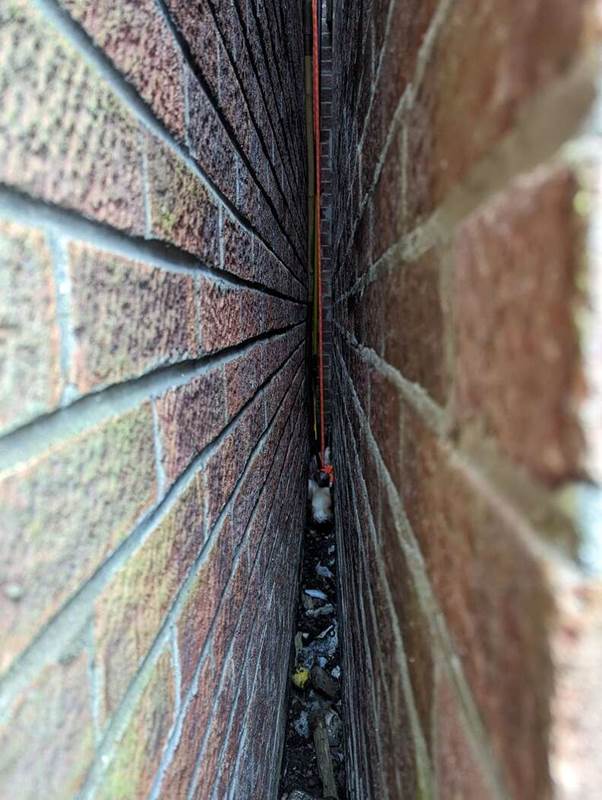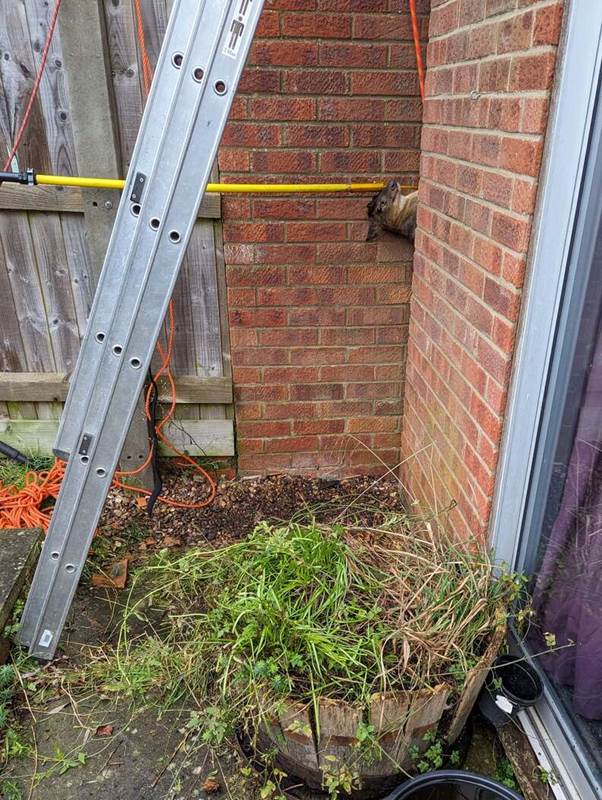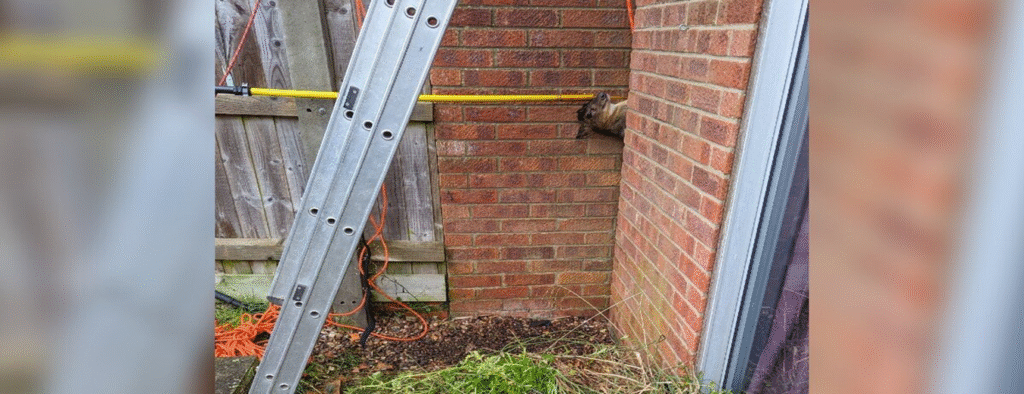In the quiet county of Lincolnshire, England, passersby were startled when they noticed something unusual wedged between two residential buildings. At first glance, it seemed like just another shadow or perhaps a forgotten object lodged in the narrow space. But then, upon closer inspection, they saw a pair of frightened eyes and a tiny face peeking through.
To their amazement, it wasn’t a cat or a small dog — the usual culprits in such rescues. Instead, a muntjac deer had somehow managed to get himself trapped upside down between the two walls. His legs dangled helplessly in the air, and his small body was tightly wedged in place. It was clear he was in distress and had no way of freeing himself.
The witnesses quickly realized the animal’s situation was life-threatening. Without immediate help, the deer risked injury, exhaustion, or worse. Wasting no time, they called Lincolnshire Fire and Rescue Service for assistance.

Firefighters Confront an Unusual Challenge
When firefighters arrived on the scene, they expected a typical call. Usually, they deal with cats stranded in trees, dogs trapped in sheds, or even birds tangled in wires. But this situation was unlike anything they had faced before.
A deer, especially one stuck upside down between two solid walls, presented a very different challenge. The muntjac, a small species of deer often found in parts of the UK, is naturally shy and easily frightened. Being trapped in such a confined space was undoubtedly terrifying for him.
The firefighters assessed the situation carefully. The deer was wedged tightly, and any sudden movement could cause injury. They quickly realized they would need expert guidance to ensure the animal’s safety. That’s when they called in the RSPCA, the country’s leading animal welfare organization, to provide specialist advice.

A Delicate Rescue Mission
Animal rescue officer Karen Nix from the RSPCA soon joined the firefighters at the scene. She immediately understood the complexity of the task at hand.
“This was a tricky rescue because the deer was trapped so tightly, and to complicate matters was also upside down — it must have been terrifying for him,” Nix explained in a press release.
Working together, the firefighters and RSPCA devised a careful strategy. Using ropes and poles, they slowly maneuvered around the narrow space. The goal was to gently shift the deer without causing him harm or worsening his panic. Every pull and adjustment required patience, precision, and teamwork.
After a tense and meticulous effort, the team succeeded. They carefully guided the muntjac out of the narrow passageway, finally freeing him from the terrifying trap.

Relief and Freedom at Last
Once out in the open, the rescuers examined the deer for any visible injuries. Miraculously, despite his ordeal, he appeared unharmed. His legs were strong, his breathing was steady, and his eyes, though wide with fear, soon showed signs of calm.
The firefighters and RSPCA officers gave him space, allowing him to regain his bearings. Then, as though nothing had happened, the muntjac bounded into the nearby undergrowth, disappearing into the safety of nature.
“It was such a relief to watch him run free into the undergrowth,” Nix said with a smile. For the rescuers, moments like these made the difficult and often unpredictable work worthwhile.


